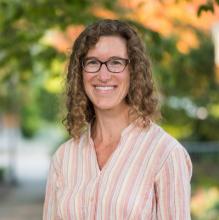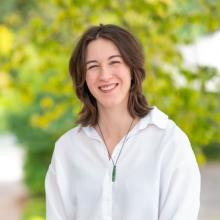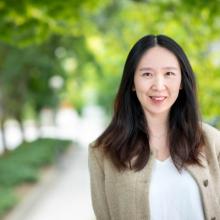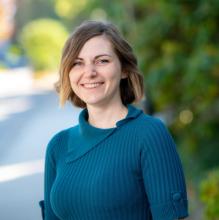Emily's research focuses on the role of nature in improving the mental health of urban residents. By developing a comprehensive model of natural spaces across metro Vancouver and applying it to health survey and prescription data, she seeks to translate scientific evidence into improved sustainability plans and policies.
Research Description
Almost a third of Canadians experience mental illness during their lifetimes, and these disorders are the leading cause of years lived with disability worldwide. Research into the benefits of natural space – areas such as parks, beaches, and gardens – shows great potential for expanding access to nature as a population-level strategy for reducing this burden. Unfortunately, numerous gaps prevent these impacts from being fully factored into urban sustainability policies. My thesis seeks to foster the translation of epidemiological evidence into urban designs through the development of a comprehensive model of natural space exposure across metro Vancouver. This Natural Space Index will then be applied to national health survey data in order to clarify the pathway between nature, social interaction, and mental health. Finally, by linking the NSI to antidepressant and anti-anxiety prescription rates across the region, this project will help clarify the full extent of potential mental health benefits.
What does being a Public Scholar mean to you?
Being a public scholar means reaching beyond the bounds of academia to make a lasting impact in the real world. Engaging with community members to identify the issues that are most important to them is a critical first step; partnering with organizations that actually implement programs and policies is essential to ensuring that these issues are fully resolved.
In what ways do you think the PhD experience can be re-imagined with the Public Scholars Initiative?
Far too often researchers speak solely to the narrow audience of their peers and fail to engage with those impacted by their work until it is almost complete, if at all. Unfortunately, the design of many Ph.D. programs serves to reinforce this narrowness by defining scholastic success as the number of high-impact journal articles students publish before graduation. By explicitly prioritizing public engagement and providing the funding and support that students need to engage effectively, I hope the Public Scholars Initiative will encourage a shift toward a more holistic and practical view of the Ph.D., both at UBC and in academia more broadly.
How do you envision connecting your PhD work with broader career possibilities?
Unlike many Ph.D. students, I don’t plan on staying in academia after completing my dissertation. Instead, I hope to find a role in an organization where research, program development, and policy design are fully integrated. No matter where I end up, I plan to continue integrating tools from epidemiology, geography, and urban planning to develop solutions to the mental health issues faced in a rapidly urbanizing world.
How does your research engage with the larger community and social partners?
As part of developing the Natural Space Index (NSI), I created a set of maps depicting variation in the presence, form, access, and quality of natural spaces across the Vancouver region. By building a website to make these maps publicly available, I hope community members will be able to take better advantage of the resources the area already has to offer. The site will also include training on a validated tool that people can use to appraise their local parks and advocate for any improvements that may be needed. Finally, because most urban natural space policies are enacted at the municipal level, I am also working with the Vancouver Board of Parks and Recreation to discuss the application of the NSI to their ongoing efforts to ensure easy access to natural space as part of Vancouver’s Greenest City 2020 Action Plan.
Why did you decide to pursue a graduate degree?
Seeing how public health concerns deepen existing inequalities motivated me to pursue master’s-level training in health advocacy and social change. After applying this degree to a range of positions in communications and research administration at the U.S. National Institutes of Health, I realized that I needed a broader set of analytical and methodological skills in order to support the design of healthy and sustainable cities.
Why did you choose to come to British Columbia and study at UBC?
I came to UBC to be part of a CIHR-funded training program that focused on building interdisciplinary partnerships to solve pressing environmental and occupational health problems. Although that program has now wrapped up, it formed a crucial part of my Ph.D. program, offering the chance to couple classroom instruction with practical experience.
Being a public scholar means reaching beyond the bounds of academia to make a lasting impact in the real world".




